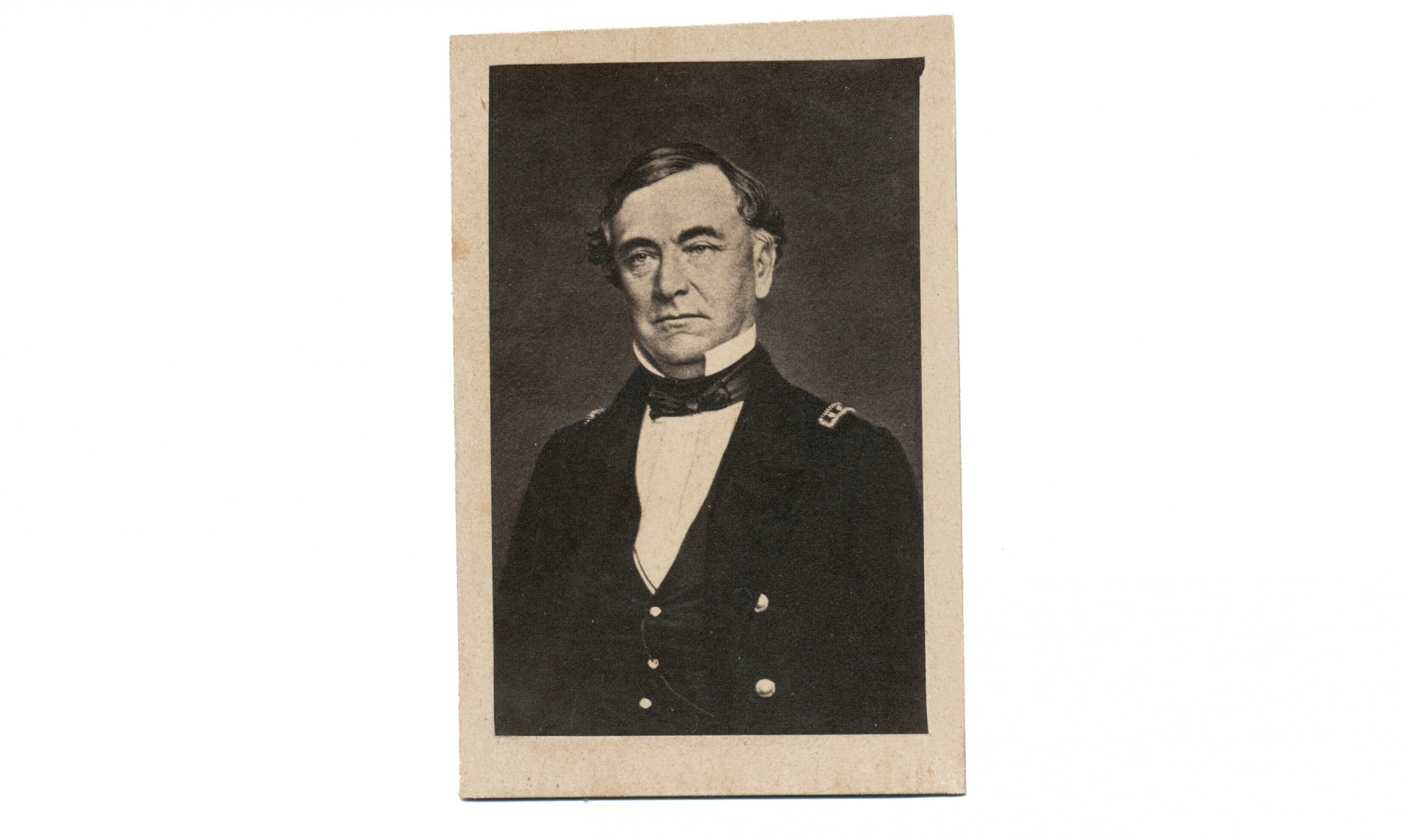site search
online catalog
CDV BUST VIEW OF CONFEDERATE GENERAL HUGER

$45.00 SOLD
Quantity Available: None
Item Code: 801-444
Image shows Confederate General Benjamin Huger clean shaven in a pre-war image that has been heavily retouched by the photographer. Apparently the image was taken of the General in civilian clothes and the photographer drew in military buttons and shoulder straps.
Image is clean and clear and the contrast is good.
Reverse has imprint for BENDEN BROTHERS of Baltimore. Period pencil inscription at top of reverse reads “HUGER.”
Benjamin Huger was born in Charleston, South Carolina, on November 22, 1805. He graduated from West Point in 1825 and was assigned to the artillery, but spent three years working on topographical duty before becoming an ordinance officer. For about twelve years, he commanded the armory at Fort Monroe, in Virginia.
In the Mexican War, he became chief of ordnance to Winfield Scott and received several brevets for his service in three campaigns. Upon his return to the US in 1848, Huger served on a board to develop new artillery tactics, and then was superintendent of armories in Virginia, Maryland and other states of the South.
In 1861, he joined the Confederate army, and was made a Brigadier General on June 17, 1861. Less than four months later, he was promoted to Major General. He was placed in command of the Department of Norfolk, and soon declared that his district was held too weakly to be effective against Union forces. In May of 1862, when Union troops were approaching, Huger ordered the destruction of the city's works and naval yard, had the CSS "Virginia" dismantled and evacuated the area. While in command of Roanoke Island, North Carolina, he failed to reinforce the troops, and they had to surrender to the Union expeditionary force. Although the Confederate Congress investigated Huger's part in this defeat, Confederate President Jefferson Davis gave him divisional command under Gen. Joseph E. Johnston. Huger led a division at Seven Pines and in several battles in the Seven Days' Campaign. He was relieved of duty on July 12, 1862, because of his lackluster leadership in battles such as White Oak Swamp and Malvern Hill. Placed on artillery and ordnance-inspection duty, he served in the Western theater and in the Trans-Mississippi Department. By the end of the war, he was in poor health. He retired from the military and worked as a farmer, first in North Carolina, then in Virginia. He returned to his hometown of Charleston, South Carolina, at the end of his life, and died there, on December 7, 1877. [SS]
~~~~~~~~~~~~~~~~~~~~~~~~~~~~~~~~~
THIS ITEM, AS WITH ALL OTHER ITEMS AVAILABLE ON OUR WEB SITE,
MAY BE PURCHASED THROUGH OUR LAYAWAY PROGRAM.
FOR OUR POLICIES AND TERMS,
CLICK ON ‘CONTACT US’ AT THE TOP OF ANY PAGE ON THE SITE,
THEN ON ‘LAYAWAY POLICY’.
THANK YOU!
Inquire About CDV BUST VIEW OF CONFEDERATE GENERAL HUGER
For inquiries, please email us at [email protected]
Most Popular
Historical Firearms Stolen From The National Civil War Museum In Harrisburg, Pa »
Theft From Gravesite Of Gen. John Reynolds »
Cavalry Carbine Sling Swivel »
Fine Condition Brass Infantry Bugle Insignia »
featured item
BUGLER’S SHELL JACKET IDENTIFIED TO PRIVATE WILLIAM BOPP, 2ND MISSOURI STATE MILITIA CAVALRY
Scarce Union Missouri cavalryman's jacket modified with Zouave style V-neck collar and custom-trimmed with bright yellow narrow cording at cuffs and on front, forming a semi-regulation rack pattern with looped cloverleaf ends. Seven-button front with… (591-04). Learn More »




